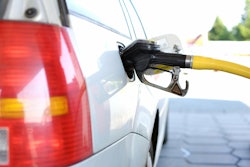
A new digital service fromABBis enabling industrial operators to maximize energy efficiency and boost sustainability by identifyingmotor-driven equipmentin their facilities with the best energy-saving potential.
TheABB Ability Digital Powertrain Energy Appraisalservice draws on data measured from fleets of digitally connectedelectric motorsandvariable frequency drives(VFDs) to show where and how much energy can be saved by upgrading to thelatest high-efficiency technologies.
Industrial operators can then make data-driven decisions when prioritizing investments.
How to reduce global electricity demand
Upgrading to energy efficient technology is one of the simplest and most cost-effective ways to lower energy consumption and associated greenhouse gas emissions.
Across the world’s 300 million industrial motor-driven systems, there is potential to reduce global electricity demand by up to 10% by switching to high-efficiency systems.
“The challenge for an industrial operator is knowing where to start in a fleet of hundreds of electrical motors,” saidAdrian Guggisberg, division president of ABB Motion Services.
“ABB developed the new Digital Powertrain Energy Appraisal service to provide clarity by analyzing motor data and identifying where businesses should focus investment to maximize energy efficiency gains that reduce operating costs and CO2emissions.”
Improving energy in energy-intense situations
One operator reaping the benefits isWaggeryd Cell, a pulp mill in southern Sweden with industry-leading energy efficiency. In an effort to further improve the efficiency of its energy-intensive process, Waggeryd is building itsABB Ability Condition Monitoring system.
This draws data from digitally connected motors in refiners, process pumps, fans and conveyor belts. Under the new Digital Powertrain Energy Appraisal service, ABB’s experts used data from the same sources to identify the 10 motors with the most potential for improving energy efficiency.
Waggeryd has now prioritized replacement of six of these motors to reduce energy consumption, as well as greenhouse gas emissions.
Traditionally, an energy efficiency appraisal requires time-consuming manual collection and evaluation of data and covers only the largest motor-driven systems on a site as these are typically seen as having the most potential for saving energy. However, this could overlook significant energy-saving opportunities for electric powertrains that are smaller, less accessible or where energy-saving potential is not obvious.
The new digital appraisal service uses a plug and play approach to simplify energy efficiency assessments by pulling operational data remotely from across an entire fleet of digitally connected motors. This provides much deeper insight into the business case and carbon footprint benefits of upgrading to high-efficiency motor-driven systems, while being much safer and faster.





















